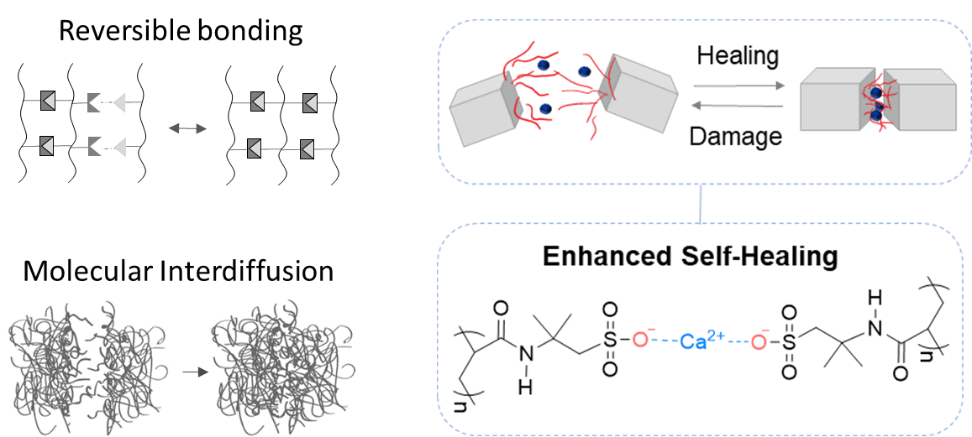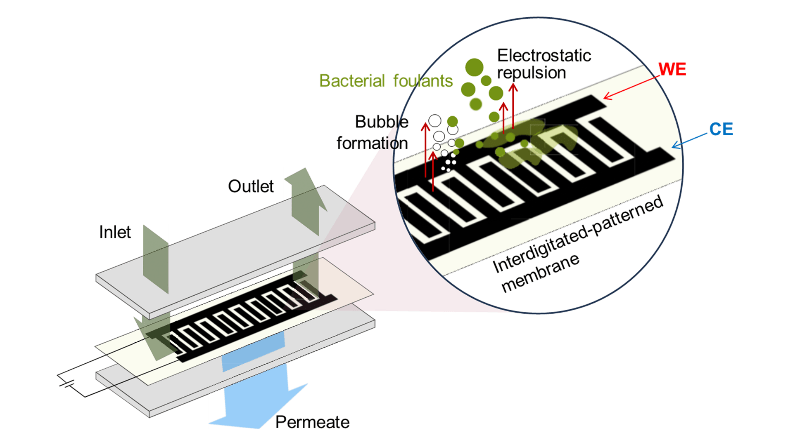Current research in the Getachew Group focuses on understanding the performance of “smart materials” in the context of water treatment technologies and resilient water infrastructure. What are smart materials? Broadly speaking these are materials that respond to their environment or a defined stimulus in a predictable and controllable way. The responses are generally beyond traditional mechanical deformation or phase change and instead mimic complex functions seen in the biological world. A few examples of smart materials are self-healing materials, thermo-responsive polymers, piezoelectric crystals, and shape memory alloys.
Despite the potential of such smart materials, their application to different environmental engineering processes has been limited. This is in part because, thus far, development and scientific understanding of smart materials has been restricted to inert and moisture free environments. Advancing our scientific understanding of smart materials in complex environments can lead to breakthrough technologies that can address many pressing environmental challenges. Our group aims to center the needs of water treatment and other environmental engineering applications to the design and testing of smart materials to develop next-generation solutions to protect our environment and support healthy and resilient communities.
Below are highlights from current projects.
Fate and Transport of Healing Agents from Self-Healing Polymers
There are several routes to achieve self-healing in polymers. One approach is to make polymer composite materials where microscopic capsules and capillary tubes that carry a “healing agent” are embedded within a polymer matrix. The healing agent is a liquid reactive solution that is exposed when the polymer is damaged and reacts with the outside environment to solidify in place, effectively covering the damaged area and restoring the polymer’s properties. Our lab investigates the healing agent release and reaction kinetics to better understand their fate in the environment.

Self-Healing Polymers in Complex Water Matrices
A second approach to self-healing relies on the capacity of polymeric chains at a damage interface to diffuse, reorganize, and re-form bonds with one another. Our lab investigates key factors that impact this intrinsic capacity to re-form bonds and identify synthetic parameters that can optimize self-healing in the presence of complex interactions.

Electroactive Membranes
Replacing chemically intensive processes with electroactive, chemical-free processes can make water treatment more amenable to variable water sources, fluctuating operating conditions, and reduce system complexity and cost. In particular, in situ electrochemical approaches to combat fouling and scaling during water treatment requires an energy cost <0.1% that of chemical cleaning, the current industry standard. Our lab investigates the application of this concept to membrane filtration. In particular, we are studying patterned electroactive membranes, where both the working and counter electrode are printed or laser-scribed on the surface of the membrane, to improve the efficiency and scalability of electrochemical fouling removal.

